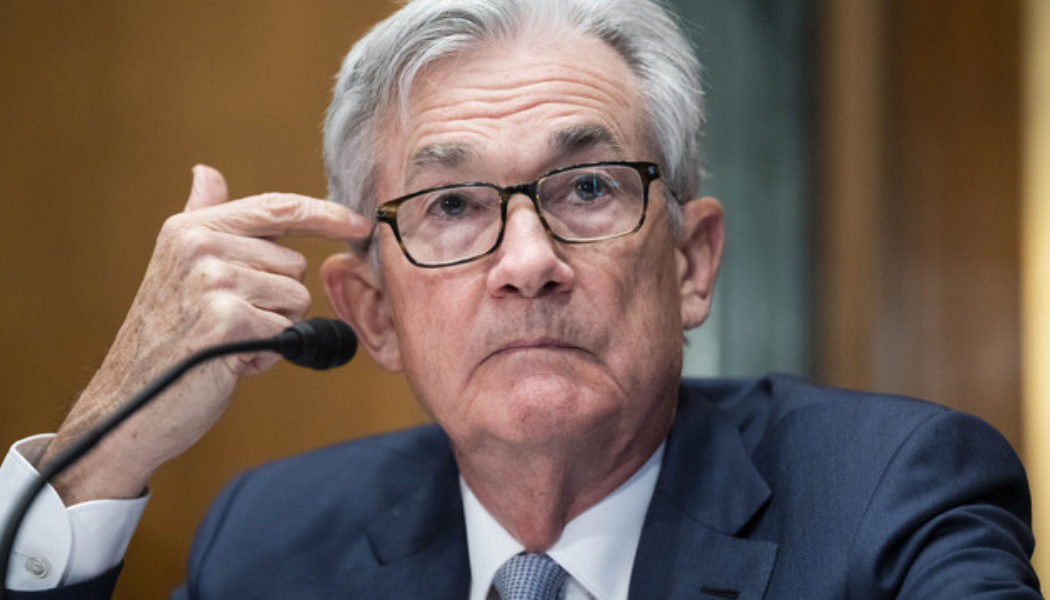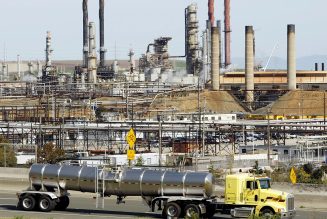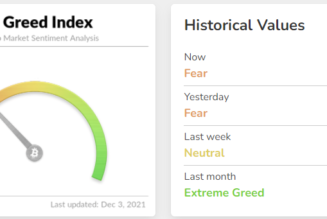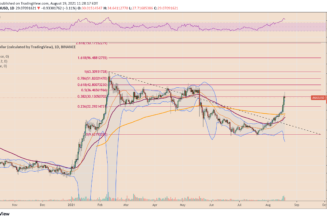Rates this year could reach their highest levels since before the 2008 Wall Street crash if surging prices continue. That prospect has sent stocks sliding this year and pushed mortgage rates above 5 percent for the first time in a decade. In a measure of how jittery investors have become, stocks rose after Fed Chair Jerome Powell said the central bank isn’t expecting to hike rates by even larger increments — yet. Even so, he said, more large increases were “on the table” for its next couple of meetings.
“Inflation is much too high and we understand the hardship it is causing,” Powell told reporters after the meeting.
Lifting borrowing costs for the rest of 2022 raises the odds of the U.S. tipping into recession during an election year, an event that would further sour voters already angry at President Joe Biden’s handling of the economy.
Powell said the Fed could avoid that outcome. “We have a good chance to restore price stability without a recession, without a severe downturn, without materially higher unemployment,” he said. “I see a strong economy now. I see a very strong labor market.”
He acknowledged that the task would be challenging, particularly if supply chain disruptions continue to plague the global economy. But he said the Fed was willing to do what it takes to bring prices to heel, adding, “We’re moving expeditiously to bring it back down.”
“I have no doubt the Fed is going to achieve its inflation objective over the next two or three years,” said Gus Faucher, chief economist at PNC Financial, the nation’s ninth-largest bank. “We may not like the result.”
The Fed’s rate hike campaign marks a new epoch for the economy. The central bank’s easy money policies over the years have enriched many Americans by helping to send stock prices into the stratosphere, boosted home valuations to a record-shattering $43 trillion, and given ordinary consumers extra cash to spend via lower borrowing costs and home refinancings.
The end of those good times has shaken consumer confidence, putting an uncomfortable spotlight on the unelected Fed policymakers ahead of the congressional midterms as they shift into inflation-fighting mode. Republican Fed critics — and some prominent Democrats — have even blamed the central bank itself for allowing inflation to go unchecked for so long.
“The Fed just doesn’t like doing something like this is in an election year,” said Charles Calomiris, a professor at Columbia Business School who served as chief economist at a key bank regulatory agency under former President Donald Trump. “It’s very awkward.”
It’s not yet clear how far the Fed will go. The central bank still sees the possibility that inflation could cool somewhat on its own as supply chain bottlenecks ease and congressional spending fades. In the best-case scenario, the Fed could increase rates from their ultra-low levels without needing to go much further and restricting the economy.
But professional forecasters generally expect the central bank to have to dent growth more forcefully than that to bring down spending and ultimately inflation, something Powell said they would not hesitate to do if necessary. Some economists estimate that the Fed will have to crank up rates much higher than they currently project to even get to a place where they’re not themselves contributing to price spikes.
“The Fed missed its chance to tighten without a recession,” Calomiris said. “The longer they delay and pretend they might still have that chance, the more severe they’re going to make it.”
After four decades where the Fed’s main borrowing rate almost never dropped below 2.5 percent, the economy has now seen more than a dozen years when it has never gone higher than that point. After Wednesday’s move, the rate sits between 0.75 percent and 1 percent.
Now the central bank is expected to keep ramping up borrowing costs at each of its rate-setting meetings, which occur roughly every six weeks, for the rest of the year. It will also be watching for signs that it’s hitting the brakes too hard.
“With inflation at a 40-year high, it’s hard to see the Fed willing to stop anytime soon,” said Beth Ann Bovino, chief U.S. economist at S&P Global Ratings. “It seems like they’re ready to hit the throttle.”
Fears of a Fed-induced recession in 2023 have grown, particularly when mixed with the economic fallout from Russia’s invasion of Ukraine and renewed lockdowns in China, both of which the central bank acknowledged in its announcement would likely make supply chain problems worse. But some Fed watchers are hoping that it will be able to slow the economy without leading to a full-on contraction.
“It is too soon to say that we have to have a recession,” said Krishna Guha, vice chair at Evercore ISI and a former official at the New York Fed. But the process won’t be gentle regardless, he added. “When we talk about a soft landing, we don’t really mean a super soft landing. We mean a bumpy normalization.”
[flexi-common-toolbar] [flexi-form class=”flexi_form_style” title=”Submit to Flexi” name=”my_form” ajax=”true”][flexi-form-tag type=”post_title” class=”fl-input” title=”Title” value=”” required=”true”][flexi-form-tag type=”category” title=”Select category”][flexi-form-tag type=”tag” title=”Insert tag”][flexi-form-tag type=”article” class=”fl-textarea” title=”Description” ][flexi-form-tag type=”file” title=”Select file” required=”true”][flexi-form-tag type=”submit” name=”submit” value=”Submit Now”] [/flexi-form]









